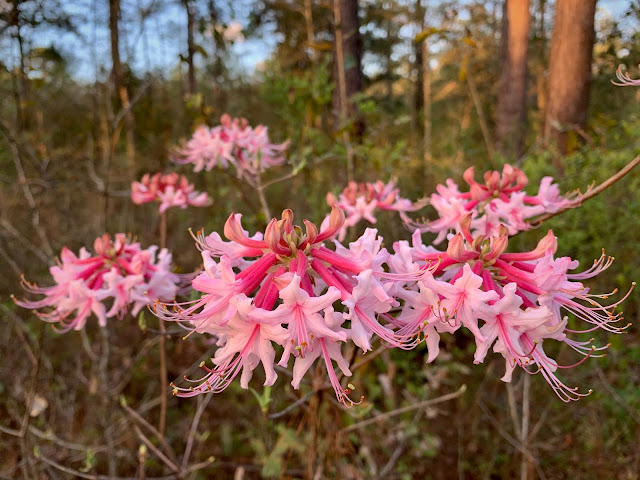Placing Shrubs in Native Landscapes
 |
| Ardisia in bloom |
An electrifying event occurred at my house last week when I received the newest copy of the Palmetto, our FNPS flagship magazine. When the Palmetto arrives here, all decks are cleared and I sit down for a soothing session of uninterrupted native plant bliss.
On this particular day, I had just posted an article here about marlberry - Ardisia escallonioides. You may remember that I LOVE this shrub and had been liberal with descriptions of its virtues. Imagine my dismay when I read in Craig Huegel's Palmetto article that he classified marlberry as a plant with a deficiency!! (Don't worry, this has a happy ending.) Dr. Huegel states, "Species such as marlberry, myrsine (Rapanea punctata), and coffees (Psychotria spp.) are good examples of woderful wildlife plants that need to be carefully placed within the landscape to get their full value."
Well, I can tell you, I leapt up and ran to my computer to beg for clarification. I am delighted to tell you that Dr. Huegel very kindly complied, and has provided us here with a detailed explanation. Here it is:
"Marlberry (Ardisia escallonoides) is an excellent choice for semi-shady woodland understory plantings designed for wildlife in areas that regularly do not experience temperatures below 26 degrees F. Because it is monoecious, each plant produces large numbers of fruit; often fruiting twice during the year. The flowers, besides being wonderfully fragrant, attract a wide assortment of insects too. Marlberry needs to be planted in clusters to optimize its cover value, however, or mixed with other species with denser foliage and stouter branches. Do not plant it as a stand-alone accent as its relatively short and weak branches will not provide enough cover to protect birds and other small wildlife seeking to feed on its fruit.
Hope this is helpful in describing my thoughts on marlberry. Like many "shade-tolerant" plants, it will get leggy and not flower/fruit well if placed in dense shade. Placing marlberry in a landscape properly requires some thought as to what it should be mixed with and where it might receive a bit of sunlight (1-2 hours) during the day."
Ahh, my love is NOT deficient, just needs a little help. Like me! This was extremely helpful, of course. As it happens, the ardisias in my yard are placed in good spots, through dumb luck.
If you prefer not to rely on dumb luck when planting your yard, then Dr. Huegel's new book,
Native Plant Landscaping for Florida Wildlife is a wonderful resource. We read so often that "wildlife needs food, water, and shelter," but in this new book we are treated to detailed explanations of how to decide:
- what plants we need for specific wildlife
- what plants will work in our own particular yard
- how to group the plants sensibly
- how to stay in compliance with local landscape regulations
You will not be disappointed! If you decide to purchase, we'd love it if you did it right here, by clicking on the right hand where you see his book. Your purchase through our site will add a few pennies to the FNPS coffers.
Knowledge is power. Happy Native Planting!
sue dingwell



Comments
See www.florida.plantatlas.usf.edu/Plant.aspx?id=91 for photos, so you won't be adding to the problems in our native habitats.
daisy
I'm responding for Sue since my climate in Clay County is closer to you. There are many choices for shrubs in the sun, but probably the ones with the best wildlife values are those with good berry production such as beautyberry, wax myrtle, choke berry or inkberry. There are several good references we recommend, listed over in the right hand column. And there's a wonderful online resource right on our own website where you can specify your county and a list of available native plants are listed for you. Here's the link: http://fnps.org/pages/plants/landscape_plants.php
Please take some before and after photos: we'd love to see them.
Thanks for writing.
Ginny